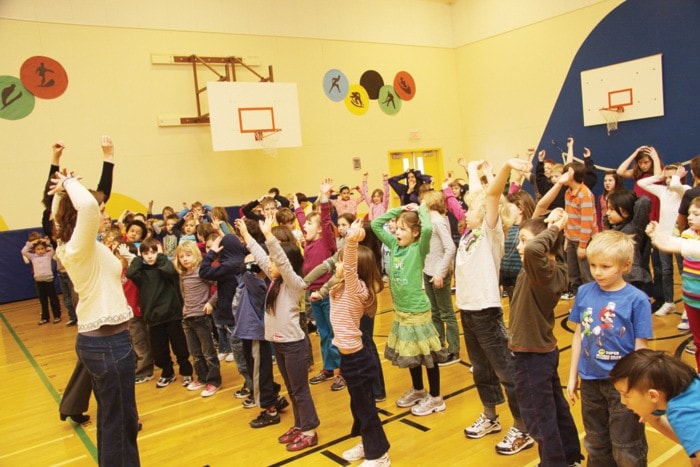Redfish elementary students are constantly thinking about water these days.
As part of the school’s Mindset for Learning initiative, students in Grades 3 to 5, as well as many in Grade 2, are working on water-related projects.
Principal Lorri Fehr says they can take any form: video, display, dance, presentation, collection, web page, brochure — whatever each student decides.
“We wanted to have kids do a project of their choice,” she says. “We tried to think of a topic that was relevant, global, and could be impactful now so when they grow up they can make wise choices.”
It wasn’t hard to come up with: “Water is connected to anything that interests you. It’s everywhere in our culture.”
Look no farther than the school’s namesake creek, which students take stewardship of, picking up litter and otherwise cleaning the area several times each year. They also raise kokanee fry and bring them out to the creek once they’ve hatched.
“The children are very aware of the creek as the spawning habitat for the fish we raise,” Fehr says.
Over the last few weeks students received some class time to brainstorm and choose their projects, but much will have to be done outside school.
“We plan to work with families and get into the community for information,” she says. “We want to reach outside the school walls to help kids connect. There are amazing community connections and lots of support for learning.”
Individual projects tackle subjects as diverse as dams and electricity generation, kokanee, global warming, water boxes, water filters, avalanche safety, water for sport, water for health, gold panning — and the Zamboni machine.
Many younger students are looking at aquatic life and animals we share water with, like dolphins, whales, penguins, sharks, and ducks.
“I am thrilled with the ownership they demonstrate as they plan for their projects,” Fehr says. “This is their big chance to bring something they love to school — to share with our community their individuality, their talent.”
A Facebook page has been created to help families “share ideas and be inspired by each other.”
Fehr also expects the water initiative to help them choose a service project, of which the school does a couple per year. One possibility involves the biosands filtration systems being used to provide clean water in Haiti.
On April 21, all the projects will be unveiled at a learning fair at the school.
